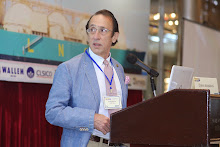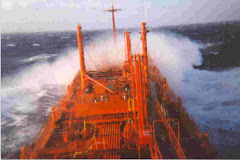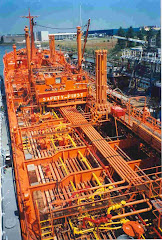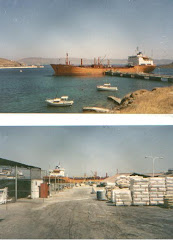Berlian Laju (BLT) plans to leave Eitzen Chemical as a separate entity and retain the previous management to run it. They will transfer Eitzen Chemical debt from the CECO holding company back to the subsidiary. As a deal prerequisite, CECO lenders must agree to waive all principal payments and loan covenants for a three-year period. Of the US$ 200 mio cash that BLT is required to inject in CECO, only US$ 50 mio will go to Eitzen Chemical. BLT will invest US$ 130 mio of these funds in Indonesian projects.
It is clear that BLT does not have the management resources to run Eitzen Chemical and prefers to rely on its existing management to deal with its problems rather than to be involved directly themselves. They make it a condition that the senior lenders grant forebearance for three years as a condition to their participation in the merger deal.
BLT is sheltering itself from Eitzen by removing all the Eitzen Chemical debt liabilities from Camillo Eitzen and Company (CECO) and putting them back on Eitzen Chemical. BLT's share in Eitzen Chemical through CECO will be just under 50% and their role will be as shareholders with any transactions with the company taking place on a third-party basis.
There are no plans to fold CECO or its operations into BLT. There appear no major changes in the way CECO does its business. Of the US$ 200 mio cash that BLT is raising by a bond issue for this transaction, only US$ 70 mio will go to CECO and of these funds, US$ 50 mio will go to Eitzen Chemical.
Needless to say previous reference to cost savings and synergy in the merger deal was mostly window dressing for retail investors, since BLT has confirmed that will be no integration or rationalization. On the chemical side, BLT is three different companies operating independently:
- BLT's Indonesian operation trading cabotage in Indonesia and internationally in southeast Asia, which is their home market and core business.
- Chembulk operating from Connecticut with stainless vessels mainly Dwt 20.000-30.000 with fairly large tanks in long haul trades.
- Eitzen Chemical (subject the merger), which also has a Connecticut office that they acquired from the Songa merger in 2007. Their fleet is mainly smaller vessels of which the largest concentration is their City class units: stainless Dwt 12.000-13.000. They also have some coated units.
Compared to larger, traditional chemical parcel operators like Stolt or Odfjell, this new BLT/ Eitzen Group has little resemblance. Stolt and Odfjell are fully integrated operations. Their vessels have many small tanks suitable for higher-paying specialty chemicals carried in smaller lots. They have a worldwide presence in both regional and long haul markets together with a complimentary tank storage business in key areas like Houston, Rotterdam and Singapore. They are heavily contracted with end-users up to 70%. Both companies have positioned themselves in the Middle East with local partners for the commodity chemical business envisaged from the new refinery projects. Financially, they have been outperforming BLT and Eitzen in bottom line results.
BLT/ Eitzen by contrast have vessels on the smaller end of the scale. The larger Chembulk units have fewer and larger cargo tanks than the Stolt or Odfjell vessels and more suitable for product-oriented and commodity chemical trades. BLT/ Eitzen have no tank terminal business. Their contract base is much thinner. Eitzen is only 30% and BLT is 50%.
To a large degree, Eitzen Chemical will have to stand on its own. BLT is using US$ 130 mio of the new money raised for this merger deal in its own operations in Indonesia. Their cash risk in the CECO merger is US$ 80 mio of which US$ 50 mio is in ailing Eitzen Chemical, but their leveraging the merger deal to put new capital in their own domestic operations.
The fact that BLT is looking to put most of the new capital (US$ 130 mio) in their domestic activities is not a good sign of support for Eitzen Chemical. It shows where they view their priorities. It is also a graphic example of the value they are bringing to the table for CECO/ Eitzen Chemical in this transaction. BLT is doing what they know best: Indonesian cabotage business and taking its distances from Eitzen Chemical. They get the benefit of the profitable CECO dry cargo operation and the offshore business. It is an attractive share exchange deal where they put minimal cash in CECO and get additional cash for their own business.
Frankly, I would have expected the Eitzen senior creditors to be a lot more demanding to grant CECO a three-year moratorium on principal payments and loan covenants and especially to dilute their security by accepting the risks in transferring the Eitzen Chemical debt from the CECO holding company. In effect, all they are getting from BLT in comfort is an additional US$ 30 mio in CECO and US$ 50 mio in Eitzen Chemical. There is no new management, no revised business plan or attractive commercial synergies, except in promises for the future. There is also no extended financial involvement, but rather an attempt to limit their future liabilities.








